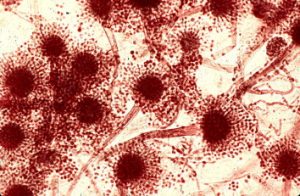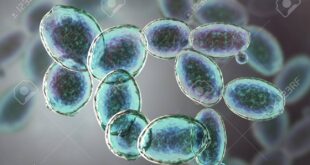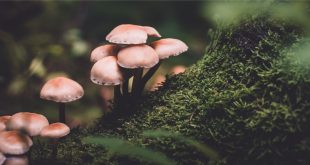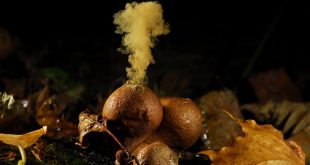Deuteromycetes- also known as Deuteromycota, Deuteromycotina, fungi imperfecti and mitosporic fungi- are fungi that are unable to produce sexual spores and are therefore placed in their own separate phylum. It is an artificial group of fungi, of which there exist approximately 15000 species.
Deuteromycetes are often reffered to as “fungi imperfecti” that is ”imperfect fungi” a term accepted by many mycologist, because their only known reproductive mechanism is asexual. They are “second-class” fungi that have no known sexual state in their life cycle, but a parasexual cycle or parasexuality generally operates in their life to fulfil the requirements of sexuality and thus reproduce only by means of conidia. Conidia are produced more complex structures such as pycnidia, sporodochia, synnemata etc. They may also produce by budding and may produce “Dolipore-septum”. This asexual state is also called the anamorph state.
These fungi are often found in the soil, and it is believed that they produce antibiotic substances in order to reduce competition with soil bacteria and other fungi. Enzymes are produced by many of these fungi to enable them to degrade plant residues, from which they obtain nutrients. Most food spoilage (Figure 1&2) and fungal human diseases are caused by members of this group.
(St-German and Summerbell,1996)
Best safe and secure cloud storage with password protection
Get Envato Elements, Prime Video, Hotstar and Netflix For Free
Best Money Earning Website 100$ Day
#1 Top ranking article submission website


Salient features of Deuteromycetes
- It is an artificial class on the basis of absence of sexual stage.
- The members of deuteromycetes are called imperfect fungi because they mostly lack the perfect or sexual stage.
- The members of this class are not homogenous, contains heterogenous group. The fungi are mostly belonging to ascomycetes and basidiomycetes.
- Majority of these organisms are terrestrial, some are marine and fresh water habitats.
- The majority are either saprobes or weak parasites of plants. The parasites cause serious disease to plants, animal and human beings.
- They typically produce well-developing, septate, branched hyphae.
- The cell are usually multinucleate.
- Sporulation is strictly an asexual process. They reproduce by conidiophore.
- They reproduce only by means of conidia.
- Conidia are produced in more complex structures such as pycnidia, sporodochia or synnemata.
- Conidia are non-motile, asexual spore formed at the tip or side of a sporogenous cell
- Conidia may be produced in chain.
- Conidia or conidiophores arising directly from the somatic hyphae.
- The occurances of sexual stages in deuteromycetes is rare.
- Parasexual cycle mostly producing perfect stages occurs in the life cycle of deuteromycetes.
- The certain fungus produces appressoria and haustoria.
- They help in mineral cycling.
Classification of Deuteromycetes
On the basis of characters, the form-class Deuteromycetes is divided into the following four form orders:
- Moniliales
- Melanconiales
- Sphaeropsidales
- Mycelia sterilia
Order1: Moniliales (Produces spores or simple conidiophore)
Conidia are usually borne freely on the mycelium or on free conidiophores arising from the mycelium. In some cases conidiophores are grouped into sporodochia or synnemata.
Reproduction by budding and oidia formation also takes place. This form-order includes both saprophytes and parasites.

Order 2: Melanconiales (Produces spore in aservula)
Conidia are producing singly or in chains from conidiophores packed closely to form an asexual fructification called an acervulus. It includes plant parasites.
Order 3: Sphaeropsidales (Producing spore in pycnidia)
Conidia are produced within small, globose or flask shaped pycnidia or modifications of such structures. It includes plant parasites.
Order 4 : Mycelia sterilia
This form-order included 20 genera and 200 form species. They are imperfect fungi in which special reproductive stages including the conidia are totally absent. They reproduce by sclerotia, rhizomorphs and other vegetative means.

Ainsworth (1973) proposed a system of classification which is now accepted by most mycologist.
Some example of class Deuteromycetes
Many anamorphic fungi are of great economic importance, some causing serious diseases of plants- anthracnose, botrytis blight, and wilt(qq.v.)- and of animals, including humans- aspergillus, candidiasis and ringworm (qq.v.) molds of the genus Penicillium (q.v.) are of great therapeutic importance.
Industrially relevant fungi
- Tolypocladium inflatum– which the immunosuppressant ciclosporin is obtained.
- Penicillium griseofulvum
- Penicillium roqueforti
- Penicillium camemberti
- Other species of Penicillium are used to improve both the taste and the texture of Cheeses.
- Aspergillus oryzae
- Aspergillus sojae
- Aspergillus niger
- Amorphotheca resinae
- Lecanicillium sp.- these produce conidia which may control certain species of insect pests.
- Other entomopathogenic fungi, including Metarhizium and Beauveria spp.
- Pochonia spp. are under developmet for control of Nematode pests.
 Plantlet The Blogging Platform of Department of Botany, University of Dhaka
Plantlet The Blogging Platform of Department of Botany, University of Dhaka






What is the name of that Club like Fungi on the cover image?
The toxic mushroom Amanita muscaria
commonly known as ” Fly agaric”
The point of view of your article has taught me a lot, and I already know how to improve the paper, thank you.
Thanks for sharing. I read many of your blog posts, cool, your blog is very good.